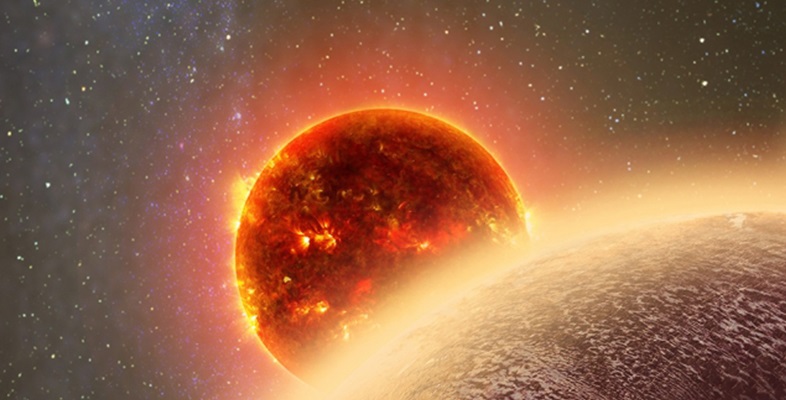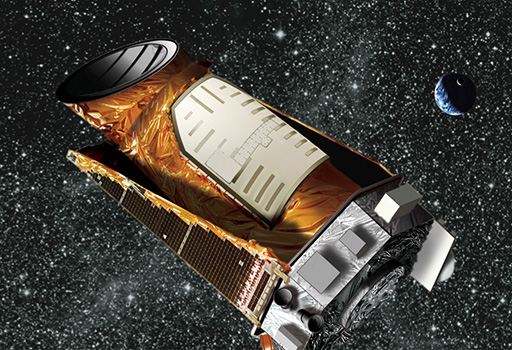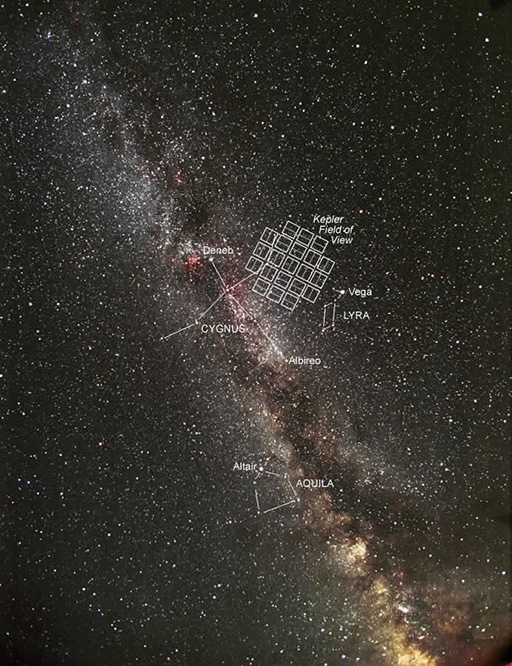5.4 CoRoT and Kepler: into space for planets galore
As detecting transits is much easier from space, the European Space Agency (ESA) launched a space telescope into Earth orbit in 2006, the first space telescope dedicated to observing transiting exoplanets. This CoRoT satellite discovered its first planet, CoRoT-1 b, a few months later. A notable highlight was the discovery of CoRoT-7 b, the first exoplanet believed to have a rocky composition.
NASA’s answer to CoRoT, Kepler, followed in 2009. Its mission was simple: to detect as many transiting exoplanets as possible in a single patch of sky. Because Kepler orbited the Sun rather than the Earth, it was capable of staring at the same patch of sky without a break, whereas CoRoT could only look at the same part of sky for up to 150 days at a time. Figure 5 is an artist’s impression of the five-metre-long Kepler space telescope in its orbit around the Sun, trailing behind the Earth.
The bit of sky chosen for Kepler’s primary mission was a part of the constellation Cygnus, the swan. Figure 6 shows Kepler’s field of view – the patch of space it stared at – overlaid on an image of the night sky. It is located over one of the swan’s wings. That patch of sky alone contains around half a million stars close enough to be visible to Kepler, and was covered by 42 separate detectors on the spacecraft.
After nearly a decade of planet hunting, Kepler was retired in October 2018. By this time, Kepler had discovered the transits of over 2600 planets – roughly two-thirds of all the exoplanets discovered to date – as well as many other interesting objects. In future weeks, you’ll learn more about some of these planets, and about how the planets discovered by Kepler have been used to estimate the total population of planets in our Galaxy.
And in Week 8 you will learn about Kepler’s replacement, TESS, which was launched in April 2018.


